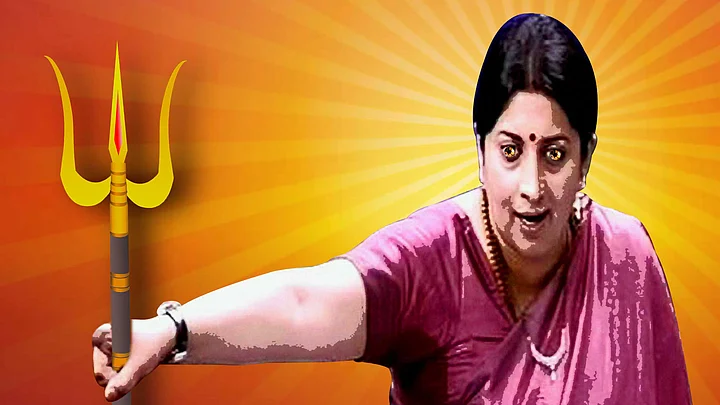Smriti Irani is angry about events in support of ‘demons’ both contemporary, and mythical. Slogans at an event in JNU in favour of Afzal Guru, convicted and executed for the attack on the Indian Parliament, have been declared seditious and anti-national. Now, he has a mythical counterpart – Mahishasura – an alleged ‘demon’ slain by the goddess Durga.
In her speech in Parliament on Thursday, HRD Minister Smriti Irani displayed some powerful rhetorical skill. She read out a pamphlet, supposedly from JNU, which spoke about Mahishasura Martyrdom Day, held on 4 October 2013.
Now, the opposition is demanding an apology from Irani for her “blasphemous” statements. She is trying to prove her credentials as a Durga worshiper.
India’s culture, religion and politics are far from being monolithic. The ‘villains’ of canonised versions of our religious epics are often celebrated in other stories. Politics too has changed, and for the BJP, an acknowledgement and even celebration of these diverse voices may, in fact, help them reach out in these polarised times.
Yes, We Worship Asuras
Asuras and their orders, Danavs and Rakshasas, are worshipped in various parts of India, often by tribal and fringe communities.
In West Bengal, Durga Puja is arguably the most important festival of the year, and Durga Ma the most revered deity. But Mahishasura, her enemy, is also worshipped by tribal communities, and she is seen as a villainous lady used by an invading army.
He [Mahishasura] was not a mythical character but an historical icon who resisted the outsiders, the Aryans, before the birth of Christ. When he defeated the Aryans repeatedly, a woman was sent [by the Aryans] to deceive him and thus society was defeated. Otherwise, eastern India, including Bengal, was under the control of indigenous societies and was called Bongadisum.Nityananda Hembram, President, Santhal Samaj of Bengal, to The Hindu
The ultimate villain, Lord Ram’s nemesis is a god to many. According to 300 Ramayanas by AK Ramanujan, there are Jain versions and commentaries of the epic, as well as those from Dravidian sources that celebrate Ravana.
When we enter the world of Jain tellings, the Rama story no longer carries Hindu values. Indeed, Jain texts express the feeling that the Hindus, especially the brahmans, have maligned Ravana, made him into a villain.300 Ramayanas, AK Ramanujan
Even today, there are temples dedicated to Ravana all over India from Vidisha in Madhya Pradesh to Kakinda in Andhra Pradesh. Then there are other so-called Asuras and Rakshas that are venerated. There is Ghatotkach, the son of Bhim and of course, the Asura king Mahabali.
Will the Current Rhetoric Help the BJP?
For some time now, the BJP, as well as their opponents have been trying to reach out to Dalit and Adivasi voters. Both the ruling party and the Congress have been trying to appropriate BR Ambedkar.
However, in certain circles at least, the words and actions of Smriti Irani have not helped her party’s cause. On Twitter, for example, #ManuSmritiIrani has surfaced as a way of calling the minister casteist.
There is also a cynical way of looking at her statements about Mahishasura, as an attempt at polarisation on religious lines before the upcoming West Bengal elections. But even within her own party, her support does not seem absolute.
Udit Raj, an MP and member of the BJP National Executive has said that he was present at an event to celebrate Mahishasura at the JNU campus in 2013, claiming he was against caste discrimination. He later hinted that he has changed his mind, and will toe the ‘party line’.
If the BJP is trying to expand its appeal and retain voters from the general election, statements against mythical figures may not help their cause.
